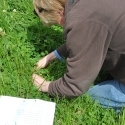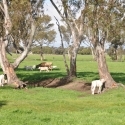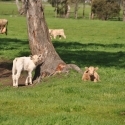13 Oct 2016
2 Potassium removal rates and transfers
Potassium for pastures
 Muriate of Potash at the outloading sheds in Vancouver
Muriate of Potash at the outloading sheds in Vancouver
Similar to dairy pastures, the major mechanism of potassium loss is not due to removal in produce but to transfer in manure and urine.
Potassium contained in products from sheep and cattle enterprises
Animal | Greasy Wool kg K /t | Live kg K/t | Live wt gain kg K/t |
Sheep | 15.8 | 2.3 | 1.8 |
Cattle | - | 2.2 | 1.8 |
This table shows the potassium contained in products from sheep and beef enterprises.
Concentration of potassium in unproductive areas such as yards or stock camps is considered a loss mechanism because the nutrient is no longer available for useful pasture production. New Zealand data suggests that in hill country over half of the dung and urine from stock will be excreted on as little as one-fifth of the paddock.
Highly concentrated potassium in urine patches is also subject to movement below the rooting zone as urine infiltrates the soil or by leaching with rainfall or irrigation. This mechanism of loss is potentially much smaller in sheep than cattle grazing systems since the volume of urine expelled at any one time is approximately ten times less.
For more information on nutrient concentrations in farm products, see: http://www.ipni.net/article/IPNI-3296
This IPNI page contains removals and uptakes for a range of crops and pastures, in both metric and imperial units - the removals of K are as the oxide form, which can be converted to K by 0.82, while oxide to elemental is converted by 0.44.




